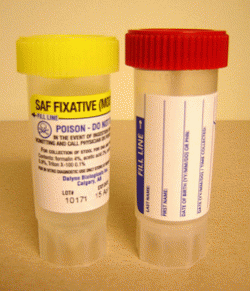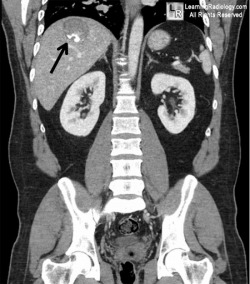Diagnosis of Parasitic Disease
Many kinds of lab tests are available to diagnose parasitic diseases. The kind of test(s) that the health care provider will order will be based on the patient's signs and symptoms, any other medical conditions they may have, and their travel history. Diagnosis may be difficult, so health care provider may order more than one kind of test.
Below is a list of some of the commonly used tests for parasitic disease diagnosis.
Below is a list of some of the commonly used tests for parasitic disease diagnosis.
Fecal (stool) Examination

Stool Specimen Container
A fecal (stool) exam, also called an ova and parasite test (O&P), is used to find parasites that cause diarrhea, loose or watery stools, cramping, flatulence (gas) and other abdominal illness. It is recommended that three or more stool samples, collected on separate days, be examined.
Health care provider may request that the lab use special stains to look for parasites not routinely screened for.
This test is done by collection of a stool specimen. Health care provider may ask a patient to put their stool specimen into a special container with preservative fluid. Specimens not collected in a preservative fluid should be refrigerated, but not frozen, until delivered to the lab or the health care provider’s office.
This test looks for ova (eggs) or the parasite.
Health care provider may request that the lab use special stains to look for parasites not routinely screened for.
This test is done by collection of a stool specimen. Health care provider may ask a patient to put their stool specimen into a special container with preservative fluid. Specimens not collected in a preservative fluid should be refrigerated, but not frozen, until delivered to the lab or the health care provider’s office.
This test looks for ova (eggs) or the parasite.
Endoscopy

Lower & Upper Endoscopy
Endoscopy is used to find parasites that cause diarrhea, loose or watery stools, cramping, flatulence (gas) and other abdominal illness.
This test is used when stool exams do not reveal the cause of your diarrhea.
This test is a procedure in which a tube is inserted into the mouth or rectum so that the doctor, usually a gastroenterologist, can examine the intestines.
This test looks for the parasite.
This test is used when stool exams do not reveal the cause of your diarrhea.
This test is a procedure in which a tube is inserted into the mouth or rectum so that the doctor, usually a gastroenterologist, can examine the intestines.
This test looks for the parasite.
Blood Tests

Blood Smear for Malarial Detection
Some, but not all, parasites can be found by testing the blood. Blood tests look for a specific parasite infection; there is no blood test that will look for all parasitic infections. There are two general kinds of blood tests that the doctor may order:
a. Serology
This test is used to look for antibodies or for parasite antigens produced when the body is infected with a parasite and the immune system is trying to fight off the invader.
This test is done by health care provider taking a blood sample and sending it to a lab.
This test is able to detect antibodies produced by the body or antigen from the parasite found in the blood.
b. Blood smear
This test is used to look for parasites that are found in the blood. By looking at a blood smear under a microscope, parasitic diseases such as malaria, filariasis, or babesiosis, can be diagnosed.
This test is done by placing a drop of blood on a microscope slide. The slide is then looked at under a microscope.
a. Serology
This test is used to look for antibodies or for parasite antigens produced when the body is infected with a parasite and the immune system is trying to fight off the invader.
This test is done by health care provider taking a blood sample and sending it to a lab.
This test is able to detect antibodies produced by the body or antigen from the parasite found in the blood.
b. Blood smear
This test is used to look for parasites that are found in the blood. By looking at a blood smear under a microscope, parasitic diseases such as malaria, filariasis, or babesiosis, can be diagnosed.
This test is done by placing a drop of blood on a microscope slide. The slide is then looked at under a microscope.
X-ray, Magnetic Resonance Imaging (MRI) Scan, Computerized Axial Tomography (CAT) Scan

Hydatid Cysts of The Liver
These tests are used to look for some parasitic diseases that may cause swelling of internal organs or abnormal scarring.
